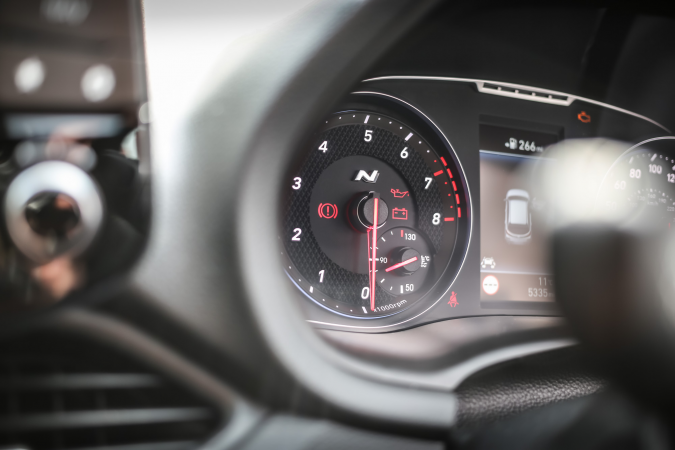Creating maintenance schedules for fleets has been the topic of debate for many years now. Operators use a few different traditional methods to find the perfect schedule which optimizes operations. Experts say that depending on the requirements of your fleet, the calculation tends to vary. Learn how to use the hours to miles calculator.
There are two ways to approach this: engine hours and miles. Understanding the relationship between miles vs. engine hours will help us understand which is the better indicator of engine performance. For that, we need to look at both individually first. Calculating miles to engine hours and vice versa can assist you in developing a comprehensive plan for breakdown vehicle use, vehicle replacement, enhancing maintenance schedule, and handling the fleet’s total expenses.
Knowing a vehicle’s engine hours will give you a better grasp of its condition. An engine hour to miles calculator is a handy tool that will help you on this journey.
Do Engine Hours Matter?
For some people, engine hours are an essential metric of calculating schedules as they decide the condition of the motor. But that’s not entirely correct. Although they can provide some information about the vehicle, they rarely reveal the entire picture. Inspecting only the motor hours will not help you gauge whether a particular car is worth your money or not.
Having said that, wanting to find out what engine hours are, how to measure them, and how they impact a vehicle’s performance isn’t unreasonable either.
What Are Engine Hours?
The term “engine hours” refers to how long a vehicle’s motor has been active since it started operating. The moment the manufacturer releases the vehicle, the count starts. When someone starts driving their vehicle, engine hours start adding up alongside the mileage.
Here’s an example that may help you understand it better. Let’s say you are driving primarily in the city. You are probably idling quite a lot in traffic. During these instances, the motor is operating even though the vehicle isn’t in motion. Thus, engine hours continue to add up despite mileage staying the same.
You may cover about 240 miles if you drive for six hours in the city. Engine hours increase by six while the odometer adds 240 miles to its count. But on the highway, given there is little to no traffic, you can easily go 600 miles in 6 hours.
So, you can see that engine hours can be the same for various mileages. This is exactly why it’s unreasonable to depend on this side while purchasing or selling a secondhand vehicle. Alternatively, research and mention how many miles the car has gained.
Consequently, engine hours may be important with specialty vehicles, like trucks as they spend much time idling – no matter where they are cruising. Checking engine hours in such cars can potentially help you develop a better maintenance plan. In conclusion, engine hours do not affect a vehicle’s life expectancy.
Do Engine Hours Impact The Performance Of A Vehicle?
Engine hours do not impact the performance of passenger vehicles. They may play a role in deciding the maintenance plan for trucks and similar specialty vehicles but do not reflect the situation of ordinary cars. Mileage is arguably the more important factor when it comes to assessing the wear and tear of a vehicle in the auto industry.
You could try converting motor hours to miles if you preferred but that would be a waste of time. As they keep their engine hours at a usual low, passenger vehicles tend to idle less.
And even if that weren’t the case, terms like low or high motor hours do not exist. If this factor was important, we would be aware of the limits. For example, when it concerns mileage, we can safely conclude that 300,000 miles count as significantly high mileage. But no similar measurements exist for engine hours.
Furthermore, exact engine hours are hard to calculate. A tachometer gauge cannot reveal how long a motor has been operating. Yes, an engine hour to motor calculator can be used to assess those numbers, but the results will not be 100% accurate.
Consequently, you cannot understand how abused a car is from the engine hours. This is when mileage becomes a more reliable source.
Key Performance Tracking Indicators
Mileage remains one of the most common indicators of a car’s performance and condition. However, the travel distance of a vehicle does not fully cover all the tasks of a medium or heavy-duty vehicle. Fleet managers will often use an hour to miles calculator to convert the data to calculate fuel consumption.
Gauging a vehicle’s state by its mileage has been the benchmark for a long time now, primarily because fleets use a mileage replacement policy. Despite that, people have now started to realize that this isn’t the best method. Fleet managers are picking up hours to miles calculators quickly.
1. Idle Time
A big criticism of considering mileage as the primary metric explains that by converting hours to miles, the rate at which your vehicle will need maintenance changes drastically. For instance, for heavy-duty truck engines, 1 gallon of fuel used through idling equals to travel 30 miles.
For a vehicle that spends that amount of operating time idle, the hours to miles ratio has to be determined to maintain the right maintenance schedule. It is easy to gauge the lifecycle cost of a truck to the company by knowing its motor hours to the mile. A medium-duty truck that has to idle to do its main function, like operate a crane, can use up to 1 gallon of fuel within 2 hours of idling.
This kind of work truck generally registers low mileage while enduring significantly higher stress (reported) on its engine.
2. Data Validation
The projections made by a company are only as good as the information inputted. Fleets may experience vastly divergent results within national companies because it differs between regions. The impact of mileage on vehicles in a rural setting will give data wildly different from ones operating in major cities.
3. Specialty Vehicles
We must also take into account the effect that miles vs. engine hours have on specialty vehicles. If a fleet comprises vehicles equipped with power take-off (PTO), the truck has to operate to charge the battery. The idle time may not always be reflected when vehicle utilization is calculated.
By bringing in an hour-to miles calculator, you are preparing your fleet better to account for general wear-and-tear on the motors.
Calculating Hours Vs Miles
Are motor hours to miles calculators the best metrics to handle a fleet? The answer depends on what the job done by the fleet is. Companies that largely depend on traveling by road might find mileage calculation to be effective. For long-haul trucks, a standardized replacement schedule can be enhanced by choosing mileage over time in place of engine hours.
Trucks that work while idle as their main application will give incorrect cost per hour data if we use mileage as a metric. After changing motor hours to miles, you may find that a low mileage vehicle needs more maintenance than a truck-based on the highway, raising its cost/hour.
To help develop preventative maintenance, you should factor in the engine hours. This will help determine fuel filters, future oil, and air filter changes. In addition, factoring in its mileage will assist in monitoring the suspension, chassis, and driveline bits.
Once you understand both the metrics, you will surely be able to craft a schedule that works the best for your fleet.
Engine Hours Calculator
You don’t need a lot to calculate engine hours. Here’s what you have to do:
- At the start of the week, reset the trip meter to 0. The trip meter and the odometer are two different things; do not mix them up. A trip meter measures distance during a particular trip. So, to measure motor hours, reset the trip meter when your week starts. For those seven days, it will count the distance traversed by the vehicle.
- We suggest getting a stopwatch that can accurately count time for 20 hours at the very least. Active it every day, every time the engine is started, be it driving or idling. Don’t forget to hit pause every time you shut down the engine. Record motor hours and total mileage.
- Jot down the total engine hours and total mileage at the end of the week. Make sure to convert minutes to hours. For that, you have to divide the acquired minute’s data by 60. For example: 50/60 = 0.83, i.e., 50 minutes are equivalent to 0.83 miles.
- Find out the average travel speed for that week. You have to divide the total mileage by hours driven to find out the average speed. If you traveled 500 miles in one week and had the engine running for 25 hours, the equation stands at 500/25=20 mph.
- Calculate engine hours (approximate). You’re almost done. For the last step, you have to check the odometer for total mileage. Then, you must divide the number by the average speed. Example: 61,000/20= 3050 motor hours.
It is impossible to measure motor hours precisely, so remember that. These are simply estimates. The actual may (and probably) vary from these calculations.
Hours To Miles Calculator
To understand how the hours to miles calculator works, one has to consider the standard equation of 1 mile per minute equals 60 miles per hour. Since there are 60 minutes in an hour, the count of miles traversed in an hour equals 60. For example, if the vehicle needs to run for 5,000 hours, you need to multiply 5,000 by 60 miles an hour which gives the result 30,000 miles.
This calculation is only possible when we consider speeding a constant.
One can drive a vehicle at 30 kilometers per hour and we calculate engine hours based on the number of hours the vehicle was on, not the distance. According to the formula speed = distance x time, distance only equals time when speed is constant. So, this type of calculation works precisely when the engine is running at a constant speed, which is rarely the case with vehicles on the road.
This type of calculation works with vehicles that are generally run at constant speeds, such as commercial load vehicles. If these vehicles are driven at high speeds, it may damage the load inside. Also, when the driver keeps decreasing and increasing the speed of the motor now and then, it leads to extensive wear and tears on the engine parts. Thus, you will have to replace the engine parts more frequently.
Hours To Miles Calculator: Alternate Methods
There is one other way to measure the hours to miles. Vehicle dealers have devised a method with the number 33 – the standard number of conversions derived after changing hours to miles. To know the number of miles a car has traveled; you have to multiply the time by 33 and this will give you the miles or the distance covered by the vehicle.
Another alternative method would be to use an expression or formula to calculate the motor hours to miles.
G/N = I
Here,
G = the number of miles a vehicle has covered
N = average miles per hour
I – average hours per mile
Reason Behind Using Engine Hours To Miles Calculator
For many people, converting engine hours to miles becomes the accepted norm as they believe it impacts the resale value of their vehicle. They keep an eye on those digits and try to decrease them manually. It is, however, impossible to decrease engine hours, even with the help of different modules and tools.
We mentioned before that engine hours do not affect a vehicle’s value. You won’t have a single prospective buyer asking you how long the engine has run in the vehicle’s lifetime. However, almost every customer will inquire about the mileage as well as examine the condition of the vehicle.
Hours To Miles Calculator: Can Engine Hours Be Blocked By Mileage Blocker?
Not only mileage blockers, but no existing modules are also capable of blocking the recording of engine hours. As those numbers barely make any difference, the module focuses on another segment. It tries to help you measure the performance of the motor.
You can try converting motor hours to miles, but we recommend spending that time with a kilometer stopper as it’s much more efficient. It’s the software that inhibits recording mileage across different control units and works perfectly regardless of the vehicle it is installed in. It is compatible with Hybrid, Diesel, Electric, and Plug-in-Hybrid cars.
It’s essential to keep in mind that manufacturers developed the mileage blocker solely for testing. But naturally, humans have found a way to use it unethically. After installing this unit into their vehicle, they activate it during drives. As it doesn’t leave any trace, many sellers can comfortably lie about the true mileage. Be wary of this when purchasing a car and stay away from such malpractices.
Hours To Miles Calculator: The Problem With Hours To Miles Calculator
There are a handful of negatives associated with these calculations. When the vehicle is static and the engine remains started for too many hours, it becomes impossible to differentiate between the hours the car has traveled, and the time is transformed into miles. Despite the vehicle being in idle condition and you being sure of it, you cannot easily measure the time the motor was run only to cover a certain distance.
To protect your calculations from this kind of error, one has to check the volume of fuel the engine has consumed. This will give them an idea about the car’s mileage which in turn makes it easier to do distance calculations.
You can find many cars in the market today that are equipped with digital speedometers (not the same as odometers). Those components display the number of miles traversed by the vehicle. But since not all cars have those parts, there are still many that rely on hours to miles calculators.
Hours To Miles Calculator: When Miles Are The Appropriate Metric?
Miles is what everyone is using these days to calculate their maintenance schedules and for good reason. If you have been doing the same, here’s a piece of good news: vehicles that gain mostly highway miles, like trucks, are more likely to have an accurate maintenance schedule if the schedule were to be devised using miles.
It’s a great way to decide the actual value when selling or purchasing a truck. For vehicles that get in plenty of idle time, you must change the engine miles to hours to get a reliable picture. Does too much idling hurt an engine? Find out here.
A multiple of 35 is used by a section of aftermarket buyers to judge the condition of trucks. For instance, for vehicles with high idle time, every 5,000 hours of run time, corresponds to 35 times x miles.
The math gets slightly more complicated for mixed fleets, however. Both miles and hours are necessary criteria when deciding a fleet’s service time. Any system that directly interacts with the engine (think cooling, fuel, exhaust) is severely affected by the motor hours.
Hours To Miles Calculator: Why Many Prefer Hours Over Miles
Most medium-duty trucks and heavy-duty applications tolerate extended periods of idling, running at decreased speeds in comparison to off-road trucks or passenger vehicles. Consider the situation for cement mixers, liquid pumping trucks, waste management trucks – engines on these vehicles have to work much harder even though the odometer does not take that factor into account.
Ford says that for a 6.0L Power Stroke Diesel, in idling condition, the fuel is continuously compressed to intensities over 3,000 pounds psi (per square inch) so it can achieve the required fuel pressure. Simply put, the fuel is fatigued at idle even though the odometer of the vehicle shows no change. This can make you develop a maintenance schedule based solely on the miles driven, which would be quite incorrect.
As a motor age, the decay to consume a gallon of engine oil equals driving for 30 miles (maximum). In these conditions, measuring life-cycle costs or scheduling future vehicle exchanges determined by the hours of motor function or the volume of fuel consumed over some time, is more effective.
For fleet managers, viewing the fleet as a whole is beneficial – and you can do it better by using distinctive calculations based on what kind of equipment you own. It is not possible to determine the actual values or the requirements of a fleet if you keep viewing them from one side. This is why evaluating fleets is crucial in understanding and developing a comprehensive maintenance schedule. And the best thing is you end up saving money and time.
Hours To Miles Calculator: How The Correct Calculation Can Conserve Time & Money
Having a clearer idea of when some particular vehicles in a fleet require service will save on downtime. The risk of disastrous repairs that can have the cars out-of-order for weeks is lowered significantly. Plus, it conserves fuel economy when compatible products are selected.
Another benefit can be spoken about. California, along with 18 more states, has established a program that provides incentives for cars that monitor non-productive idling vs. productive idling periods. According to the Motor Fuel Tax Refund for Off-Road Use, owners and businesses can receive a tax break on engine oil needed to power equipment and power vehicles secondhand off-road.
Every state follows its own set of rules and forms to apply for the state engine oil tax refund. Concrete pumpers, cement mixers, and other similar vehicles in California usually depend on PTO (Power Take-Off) units to pump cement and crank mixers, which still consume oil but in “off-road” use.
Firms that provide proof of those occurrences can apply for the exemption at every year’s end; however, companies might also prefer applying for half exemption in-person to obtain compensation.
Fleet Management: Engine Hours vs Miles – Facts
- Fleet managers need to consider the relationship between engine hours vs miles for vehicle replacement, maintenance schedules, and managing the fleet’s total expenditures.
- Engine hours to miles conversion can help to develop a comprehensive program for vehicle replacement, optimize maintenance schedules, and break down vehicle usage.
- Tracking both mileage and engine hours is essential to have a better understanding of a vehicle’s condition and performance.
- GPS technology or data from an Engine Control Module (ECM) plug-in can provide highly specific information such as engine hours, true idle vs. driving, miles driven, and daily route time.
- Converting idle hours to miles can give a different rate at which a vehicle needs maintenance, which is essential to determine the vehicle’s hours-to-miles ratio to maintain a proper preventive maintenance schedule.
- The impact of engine hours vs miles on specialty vehicles and the vehicles equipped with power take-off (PTO) needs to be taken into account while measuring a vehicle’s condition.
- A standardized replacement schedule is improved by using mileage over time for long-haul trucks, while trucks that operate while idle for their primary application may produce inaccurate cost-per-hour data if measured by mileage.
- By incorporating both engine hours and mileage, a fleet can have a better method to account for standard wear-and-tear on its engines and components.
- Factoring a vehicle’s engine hours can help to determine future oil, fuel filter, air filter changes, and factoring a vehicle’s mileage will help when monitoring its chassis, suspension, and driveline components.
- To calculate engine hours to miles, pull the data from the engine meter to determine how many hours the engine has run and calculate the hours by a factor of 60 to approximate the miles accumulated on the engine.
Final Takeaway
You have to consider these factors when using the hours to miles calculator. There are tons of online versions you can find from one search but we still strongly recommend knowing the paper-pen-based methods to get the calculations correct. Other factors like history, mileage, and overall condition can be better indicators.




